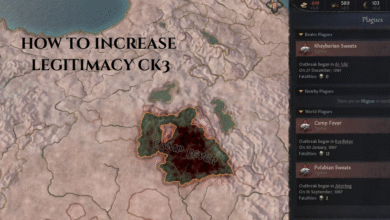Cyber Awareness Challenge 2025 Answers: The Ultimate Guide

In a world where cyber threats grow more sophisticated by the day, staying ahead of the curve is no longer optional it’s a necessity. The Cyber Awareness Challenge 2025 is a powerful tool designed to arm individuals and organizations with the knowledge they need to combat these threats. Whether you’re a government employee, a contractor, or just someone who wants to stay safe online, this training offers critical insights into cybersecurity best practices.
This guide dives deep into the Cyber Awareness Challenge 2025, exploring its purpose, key topics, preparation strategies, and answers to common questions. We’ll break down complex concepts into simple, actionable steps, so you can feel confident tackling the challenge and applying its lessons in real life. Let’s get started!
What is the Cyber Awareness Challenge?
The Cyber Awareness Challenge is an annual training program developed by the Department of Defense (DoD) to educate users about cybersecurity risks and how to address them. Think of it as your personal crash course in staying safe online. It’s not just for DoD employees federal workers, contractors, and even private citizens can benefit from its lessons.
The 2025 edition brings the latest updates to this training, reflecting the ever-changing world of cyber threats. From phishing scams to data breaches, the challenge covers it all through interactive modules, videos, and quizzes. It’s designed to be practical, engaging, and relevant, whether you’re protecting government secrets or just your personal email.
Completing the challenge isn’t just about checking a box it’s about building habits that keep you and your organization secure. By the end, you’ll have a solid grasp of how to spot threats, protect sensitive information, and respond if something goes wrong.
Why Cybersecurity Matters More Than Ever in 2025
Picture this: It’s 2025, and cyberattacks are smarter, faster, and more common than ever. Hackers aren’t just lone wolves in hoodies anymore they’re using artificial intelligence, deepfake tech, and clever social tricks to break into systems. According to cybersecurity stats, over 60% of breaches in recent years stemmed from human error, like clicking a bad link or reusing a weak password. That’s where cyber awareness comes in.
Here’s why staying cyber-savvy in 2025 is a game-changer:
-
Threats Are Evolving: Cybercriminals keep finding new ways to attack, from ransomware to AI-generated scams.
-
Remote Work Risks: More people working from home means more opportunities for hackers to exploit unsecured networks.
-
Tougher Rules: Data privacy laws are stricter, and companies need everyone on board to comply.
-
Insider Mistakes: Even well-meaning employees can accidentally leak data if they’re not trained.
The Cyber Awareness Challenge 2025 tackles these challenges head-on, giving you the tools to stay one step ahead of the bad guys.
What’s New in the Cyber Awareness Challenge 2025?
Every year, the Cyber Awareness Challenge gets a refresh to keep up with the latest threats. For 2025, expect some exciting updates that reflect the current cybersecurity landscape. While the exact details might vary depending on your organization’s version, here are some likely additions:
-
AI-Powered Threats: Lessons on spotting AI-generated phishing emails or deepfake calls.
-
Cloud Security: Tips for safely using cloud storage and collaboration tools.
-
Emerging Tech Risks: Guidance on securing IoT devices, like smart home gadgets.
-
Zero Trust Principles: A focus on verifying everything, no exceptions.
These updates ensure the training stays relevant, so you’re not just learning old tricks but preparing for tomorrow’s challenges.
Key Topics You’ll Master in 2025
The Cyber Awareness Challenge 2025 covers a lot of ground. Let’s break down the main topics you’ll encounter, with practical tips and examples to make them stick.
Phishing Attacks and How to Spot Them
Phishing is like the common cold of cyberattacks everyone’s at risk, and it’s sneaky. In 2025, phishing emails might look so real you’d swear they’re from your boss. The challenge teaches you how to spot the red flags.
How to Recognize Phishing:
-
Urgent Language: “Act now or lose access!”
-
Weird Links: Hover over URLs do they match the sender’s domain?
-
Odd Attachments: Unsolicited files? Don’t open them.
-
Spelling Errors: Legit companies don’t typo.
Table 1: Phishing Clues vs. Legit Emails
|
Clue |
Phishing Example |
Legit Example |
|---|---|---|
|
Sender Email |
support@paypa1.com |
support@paypal.com |
|
Greeting |
“Dear Customer” |
“Hi, John” |
|
Link Destination |
http://bit.ly/xyz |
https://www.paypal.com/login |
|
Tone |
“Your account is locked!” |
“Please update your info.” |
Password Security Made Simple
Weak passwords are like leaving your front door unlocked. The 2025 challenge hammers home the importance of strong, unique passwords and multi-factor authentication (MFA).
Tips for Better Passwords:
-
Mix letters, numbers, and symbols (e.g., P@ssw0rd2025!).
-
Avoid reusing passwords across sites.
-
Use a password manager to keep track.
-
Turn on MFA think of it as a deadbolt for your accounts.
Protecting Sensitive Data
Data breaches can cost millions or worse, expose personal info. The challenge covers how to handle sensitive stuff like PII (Personally Identifiable Information) or classified documents.
Best Practices:
-
Encrypt files before sending them.
-
Don’t store sensitive data on unsecured devices.
-
Shred physical copies when you’re done.
Responding to Cyber Incidents
What if you click a bad link? The challenge teaches you how to react fast:
-
Disconnect from the network.
-
Report it to your IT team or supervisor.
-
Don’t panic quick action can limit damage.
Securing Mobile Devices
Your phone’s a mini-computer, and hackers know it. The 2025 challenge offers mobile-specific tips:
-
Lock your device with a PIN or biometric.
-
Skip public Wi-Fi for sensitive tasks.
-
Update apps and software regularly.
These topics aren’t just theory they’re practical skills you’ll use every day.
How to Ace the Cyber Awareness Challenge 2025
Ready to crush the challenge? It’s not about cramming answers it’s about understanding the concepts. Here’s a step-by-step plan to get you there.
Step 1: Dive Into the Training Materials
The DoD provides everything you need videos, slides, and scenarios. Take your time with them. Focus on:
-
Real-life examples of threats.
-
Key terms like “social engineering” or “MFA.”
-
Do’s and don’ts for each topic.
Step 2: Practice With Real-World Scenarios
The challenge loves throwing curveballs like picking the right response to a phishing email. Practice with sample questions to get the hang of it.
Sample Question:You get an email saying your package is delayed and asks you to click a link to reschedule. What do you do?
-
A. Click the link—it’s probably legit.
-
B. Delete it and check the shipping site directly.
-
C. Reply asking for more info.
-
Answer: B. Always verify through official channels.
Step 3: Learn the “Why” Behind the Answers
Understanding the reasoning makes the knowledge stick. For example, why not click that link? Because it could install malware or steal your login details. Knowing the “why” helps you apply these lessons beyond the test.
Table 2: Common Scenarios and Responses
|
Scenario |
Best Response |
Why It Works |
|---|---|---|
|
Suspicious email from “HR” |
Report to IT, don’t click |
Prevents phishing fallout |
|
Weak password prompt |
Use a complex one with MFA |
Harder to crack |
|
Unknown USB found at work |
Turn it in, don’t plug it in |
Avoids malware infection |
With these steps, you’ll not only pass but truly get the point of the training.
Frequently Asked Questions (FAQ)
Got questions? We’ve got answers. Here’s a rundown of what people often ask about the Cyber Awareness Challenge 2025.
What does the Cyber Awareness Challenge 2025 cover?
It dives into phishing, password security, data protection, incident response, and mobile safety plus new stuff like AI threats and cloud security.
How long does it take to finish the Cyber Awareness Challenge 2025?
Most people wrap it up in 1–2 hours, depending on how familiar they are with the material.
Who has to take the Cyber Awareness Challenge 2025?
It’s required for DoD folks, federal employees, and contractors, but anyone can benefit from it.
How do I access the Cyber Awareness Challenge 2025 online?
Head to the DoD Cyber Exchange site, pick the 2025 version, and follow the prompts. You might need a login depending on your role.
What happens if I don’t pass the Cyber Awareness Challenge 2025?
You’ll get a chance to review and retake it. For DoD users, failing might limit system access until you pass.
Can I skip parts of the Cyber Awareness Challenge 2025?
If you’ve done it before, the “Knowledge Check” option lets you test out of sections just ace the questions!
How often is the Cyber Awareness Challenge required?
It’s an annual thing to keep you sharp on the latest threats.
Where can I find Cyber Awareness Challenge 2025 practice questions?
Check the DoD Cyber Exchange or ask your IT team for resources. Online forums might have sample quizzes too.
Why is the Cyber Awareness Challenge important for employees?
It cuts down on human errors that lead to breaches, keeping your workplace and your job safer.
What are the consequences of not completing the Cyber Awareness Challenge?
For DoD or federal folks, it could mean losing network access or facing disciplinary action.
Final Thoughts: Stay Safe in 2025 and Beyond
The Cyber Awareness Challenge 2025 isn’t just a training it’s a lifeline in a digital world full of risks. By mastering its lessons, you’re not only protecting yourself but also safeguarding your organization from costly mistakes. Cybersecurity isn’t a one-and-done deal; it’s a habit you build over time.
So, dive into the challenge, take it seriously, and keep learning. The threats won’t stop in 2025, but with the right knowledge, you can stay one step ahead. Ready to get started?



